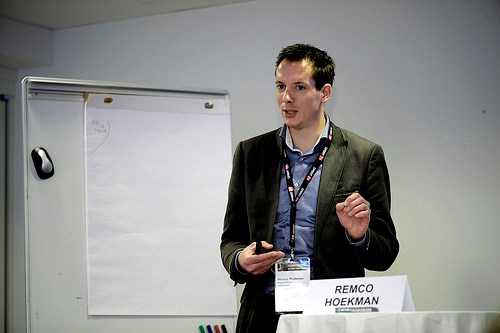Facilities don’t fill themselves

Remco Hoecman, Senior Researcher at the Mulier Institute, talks about the role of sports facilities. Photo: Play the Game / Thomas Søndergaard
30.10.2013
By Trygve Buch LaubIn both Denmark and the Netherlands, as in many other Western countries, sports facility coverage is high, and the nearest place to be active is rarely far away. Therefore, arguing that more facilities could drive increased participation is highly contested by sports researchers.
“Non-sports participants are not interested in more sports facilities. They first have to be motivated to participate in sport, and perhaps once they are motivated, then they will suddenly start to see that there are a lot of sports facilities in the neighborhood,” said senior researcher Remco Hoekman from the Mulier Institute.
Better use of existing facilities could be a more fruitful path to explore. Even though there is a call for more facilities by many clubs, around 30 per cent of facility capacity is not used, even when it is booked in prime time by clubs, a Danish study in the municipality of Rudersdal shows.
"We need to look into this hidden treasure of sports facilities and make use of the facility time that is wasted when clubs have booking but don’t show up," said Peter Forsberg, analyst at the Danish Institute for Sports Studies and the researcher behind the study in Rudersdal.
Also massive investments in elite facilities
Much of the caveat on facility building can be translated into stadium building for the sporting elite, too. The Danish FA imposes on first tier clubs a requirement to be able to seat a minimum of 10,000 people. But spectators, like sports participants, do not show up, simply because the building is there.
Since the requirement was put in place, average attendance in the Danish Superliga has declined, and only two in 12 clubs' average attendances are more than 10,000.
"Maybe the requirements are too harsh compared to the actual needs. And as most of the empty seats are expenses, not only to build but also to maintain, and as most of the elite facilities are funded by the municipalities, in some sense you can say that it is a waste of tax money," said elite facility researcher and Ph.D. student Jens Alm.





